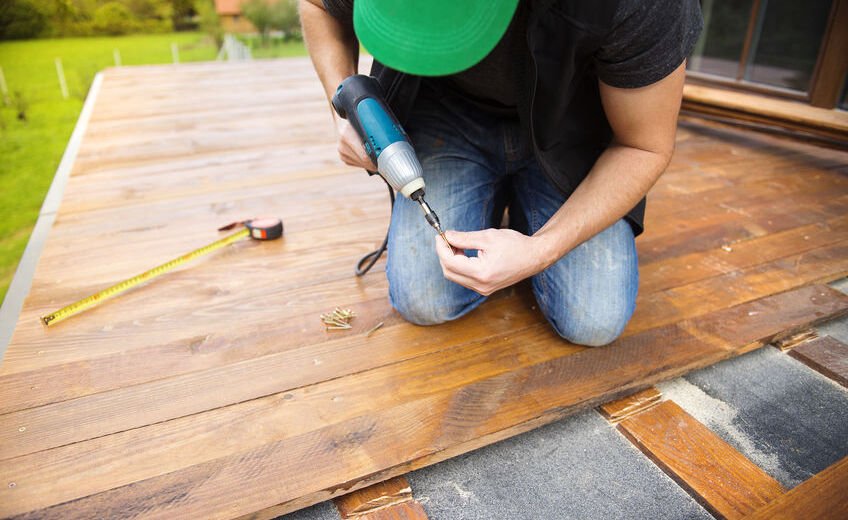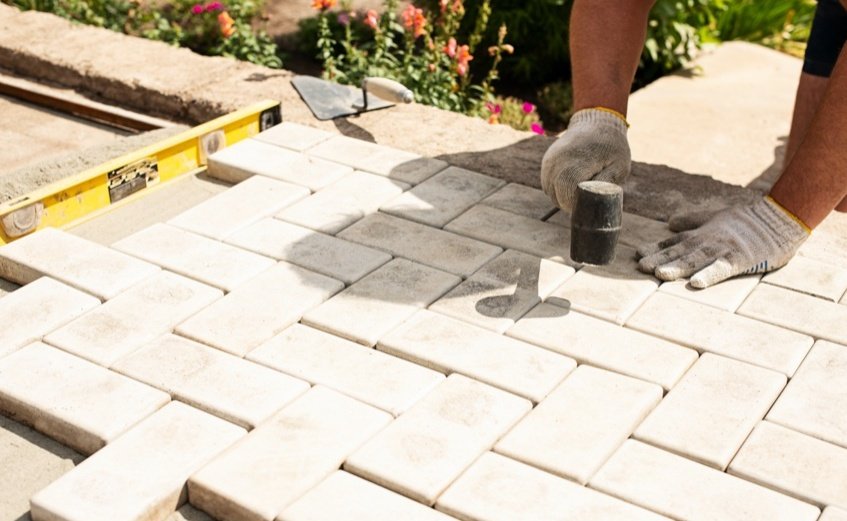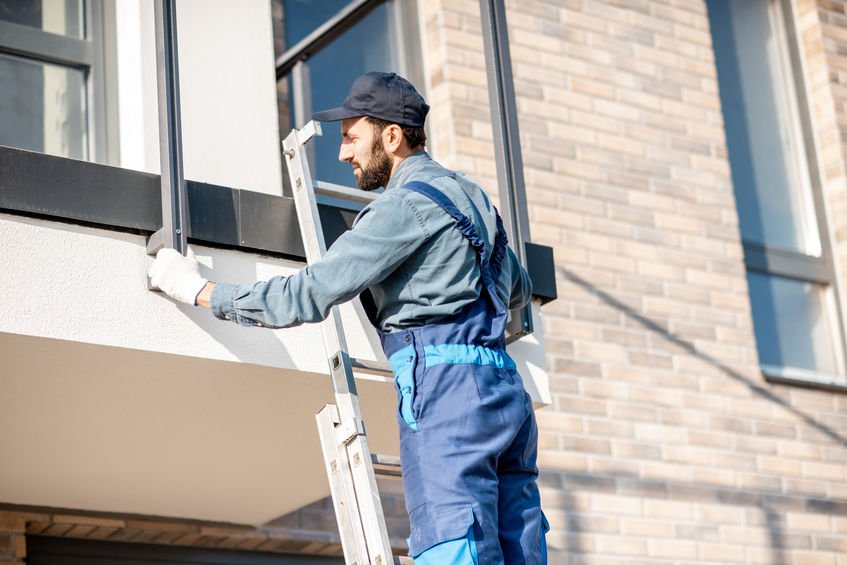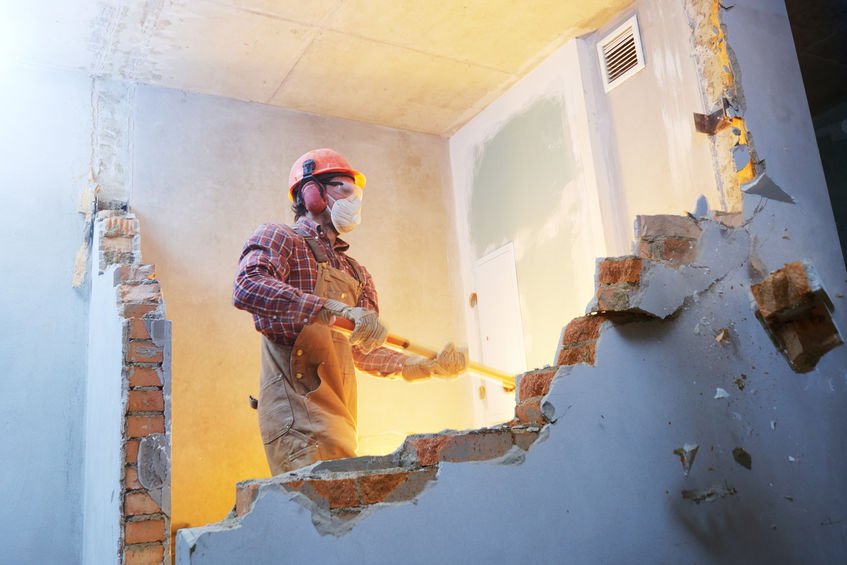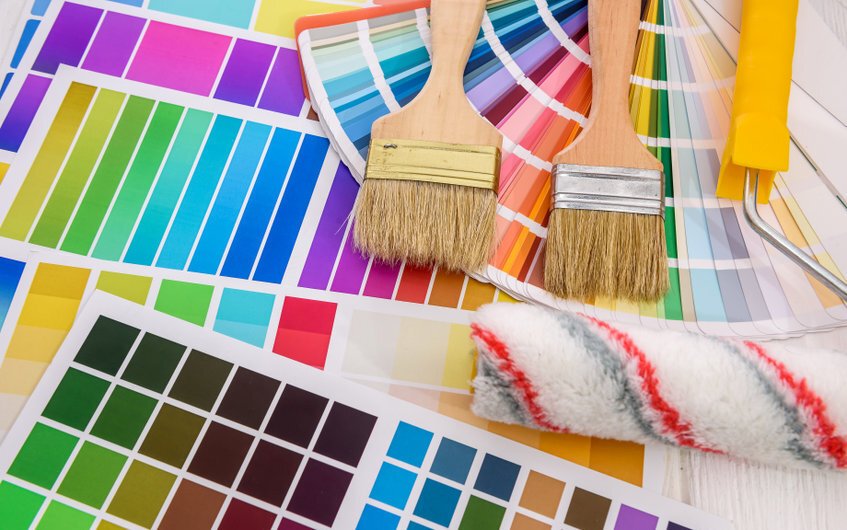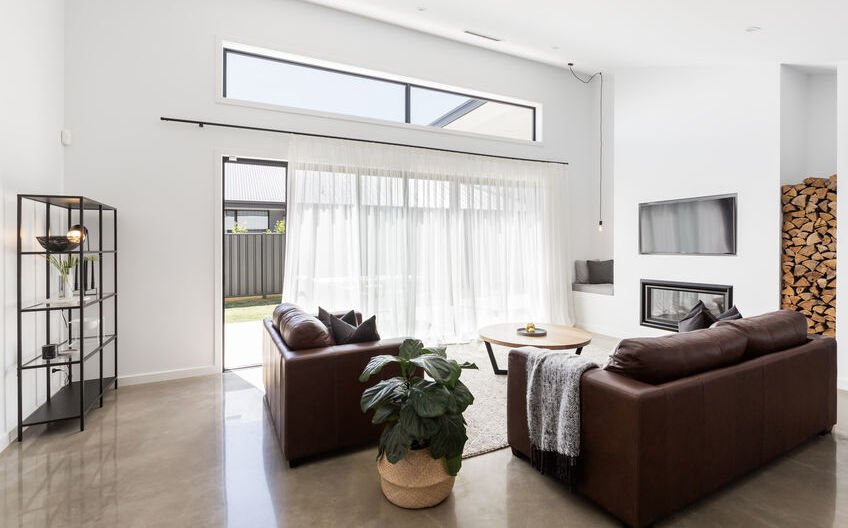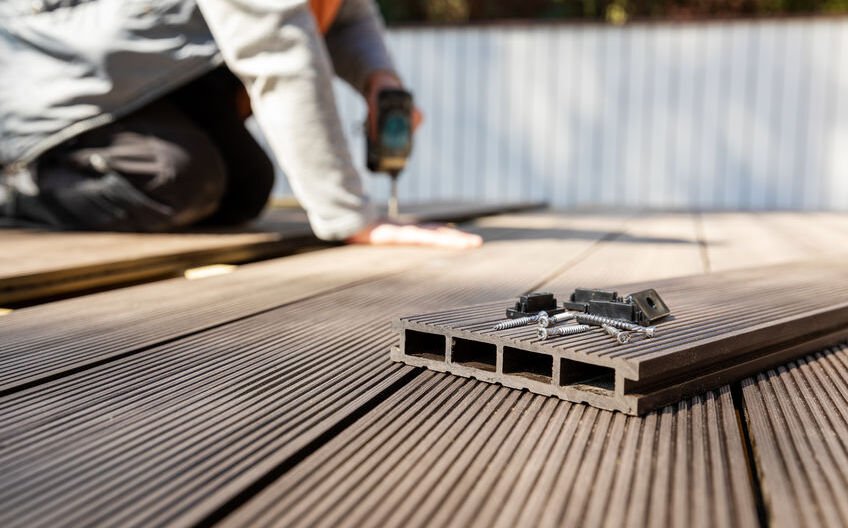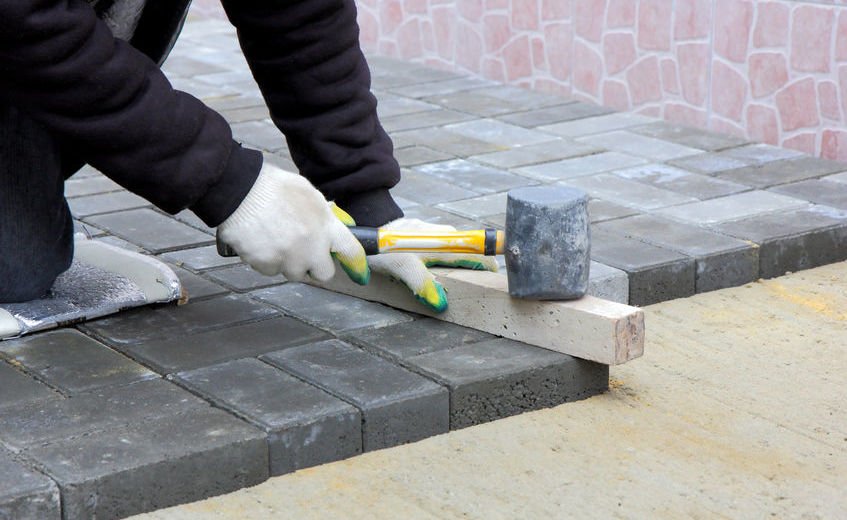
Screed is not only an excellent subfloor for all types of floor coverings, but has also become increasingly popular as the main floor covering in recent years due to its properties and appearance. Find out here how high the average floor screeding cost per sqm is in the UK, what types of screed are available and how you can best save money.
What is the average floor screeding cost in the UK?
The average floor screeding cost is around £20 – £40 per square metre in the UK. However, the cost can vary significantly depending on the type of screed and installation technique used, the thickness of the screed (also known as the build up height) and the associated labour costs for the screed layers.
ON AVERAGE: £20 – £40 PER SQM
The most popular screed types include cement screed, anhydrite screed (also calcium sulphate screed), mastic asphalt screed and dry screed. Cement screed is the most commonly installed type of screed and averages around £12 per sqm.
Anhydrite screed usually costs in the range of £15 – £20 per sqm, mastic asphalt screed averages £7 per sqm and dry screed starts at around £20 per sqm. A detailed overview of the different types of screed and their applications can be found below.
The type of screed used not only affects the cost of materials, but also the cost of labour, as effort and installation techniques differ. While cement screed, anhydrite screed and dry screed can be laid from £8 per sqm, the costs for laying mastic asphalt screed are higher at at least £15 per sqm.
The situation is quite different if screed is to be used as the main floor covering. This is the case with polished screed floors and the costs here are usually on average £90 – £150 per sqm, as the floor is extensively sanded and then usually sealed or impregnated, which increases the labour costs considerably.
For ease of reference we have prepared two examples of the cost of floor screeding for a 30 sqm area. In the first example, anhydrite screed is laid in the living room, in the second example cement screed is laid in the garage. All figures listed are approximate including VAT and may of course vary.
Example garage (cement screed): Floor screeding cost – 30 m2
1 m2 | 30 m2 | |
|---|---|---|
Cement screed, 6 cm | £12 | £360 |
Labour costs | £10 | £300 |
Total cost | £22 | £660 |
Example living room (anhydrite screed): Floor screeding cost – 30 m2
1 m2 | 30 m2 | |
|---|---|---|
Anhydrite-screed, 4 cm | £15 | £450 |
Foil + insulation | £14 | £420 |
Labour costs | £10 | £300 |
Total cost | £39 | £1,170 |
Save money: Compare floor screeding prices in your area!
There are now platforms that help you compare prices of contractors and find the best value for money in your area quickly and easily. A recommendable service is that of Bark. It only takes a few clicks to fill out the form. Whether you accept one of the offers or leave it at the price overview is up to you. The service is non-binding and free of charge.
What factors influence the floor screeding cost?
The cost of floor screeding can vary greatly and depends on a number of factors. Below is a overview of these cost factors:
- The type of screed used
- The size of the area
- The required thickness (installation height)
- The thickness of the insulation
- Which laying technique will be used?
- The condition of the floor on which it is to be laid
- Is underfloor heating desired?
- The general hourly rate of the screeding contractor
Due to the multitude of factors that can influence the floor screeding cost, it is worthwhile to carry out a regional comparison of offers beforehand in order to find the best price-performance ratio.
5 different types of screed and their properties
1. Cement screed
Cement screed is the most commonly installed type of screed and is suitable for both interior and exterior surfaces. The advantages are the relatively low price of about £12 per square metre in combination with also relatively low installation costs of £8 – £12 per sqm as well as the high load- bearing capacity of cement screed.
However, cement screed is also a little prone to cracking and the drying time is higher than average. A minimum of 6 weeks can be expected here, which should definitely be included in the project planning. The usual installation height for cement screed is approx. 6 cm.
2. Anhydrite screed
Anhydrite screed (also known as calcium sulphate screed) is becoming increasingly popular due to its good thermal properties, short drying time and only marginally higher cost (£15 – £20 per sqm, with installation costs of £8 – £14 per sqm) compared to cement screed.
Drying time is sometimes as little as 7 days and the installation cost is relatively low as anhydrite screed is liquid and self-levelling. It is very popular, for example, for laying on underfloor heating, which is why anhydrite screed is also often referred to as heating screed.
Although installation is quicker and less finishing work is required, it is important that the subfloor is properly prepared beforehand. It is common for anhydrite screed to be at least 4 cm high.
3. Mastic asphalt screed
In terms of price per square metre, mastic asphalt screed is the cheapest screed option at around £7 per sqm. However, the installation costs of at least £15 per sqm are significantly higher than for other variants.
This is because, unlike anhydrite screed for example, it cannot be poured but must be applied by hand with a trowel. This results in significantly more time and effort for the screed layers.
Mastic asphalt screed is extremely robust and resistant to moisture, making it well suited for the garage or damp rooms, for example. For living spaces where heating is required, mastic asphalt screed may not be the best choice, as it does not have the best thermal properties. The construction height is usually in the range of 2 – 3 cm.
4. Dry screed
Dry screed is a good alternative when things have to be done very quickly. There is no need for long drying times, as this type of screed is already laid dry. Other advantages are the low weight and installation height and good resistance to liquids. The price of dry screed starts at around £20 per square metre, but the installation costs are relatively low at an average of £8 – £12 per sqm.
5. Design screed: synthetic resin screed and magnesia screed
Similar to magnesia screed, synthetic resin screed is a design screed that is used especially in industry due to its resilience and insensitivity to moisture. Due to the properties and special appearance of these two types of screed, they are also becoming increasingly popular in the private sector.
With synthetic resin screeds, different types of plastic such as epoxy resin and polyurethane are added to the screed. Due to the chemical additives, synthetic resin screed hardens much faster. Due to its high weather resistance, this variant is also popular for outdoor use. Synthetic resin screed is available from about £50 per sqm.
Magnesia screed is made from, among other things, magnesium chloride in combination with natural substances such as sawdust and, unlike synthetic resin screed, is relatively sensitive to moisture and takes about a month to dry completely.
Magnesia screed is therefore not suitable for outdoor use or for damp rooms such as the bathroom. However, it has very good thermal properties in terms of insulation (both heat and noise). Magnesia screed is significantly more expensive and starts at around £90 per sqm.
What is liquid screed and what are the costs?
Liquid screed is the most commonly used form of screed. This means nothing other than that this type of screed can be laid fluidly, i.e. unlike dry screed, for example, it is liquid. This has various advantages and simplifies installation.
The most common types of liquid screed are the cement screed and anhydrite screed already presented. The cost of liquid screed is therefore often the same as for cement screed and anhydrite screed and is in the range of £15 – £20 per square metre.
Magnesia screed is therefore not suitable for outdoor use or for damp rooms such as the bathroom. However, it has very good thermal properties in terms of insulation (both heat and noise). Magnesia screed is significantly more expensive and starts at around £90 per sqm.
Depending on the installation technique and screed type, additional costs are possible
The installation technique also influences the floor screeding cost. If the requirements for the screed floor are not particularly high, e.g. as a substrate for sheds or garages, bonded screed is sufficient in most cases. This is simply applied to the floor substrate.
The situation is different for more demanding requirements, such as in living areas. With a floating installation, as in our living room cost example above, screed is laid on top of a foil and insulation layer, for which extra costs of around £12 – £18 per sqm apply.
Liquid screed is laid free flowing. When liquid screed is laid over underfloor heating, there is a slightly higher labour cost, increasing the installation cost by around £5 per sqm.
For polished screed floors, the cost can increase significantly if special patterns or colouring are required after sanding and sealing. The total cost can then be over £200 per sqm.
How high are the costs of leveling a floor?
The average floor leveling cost is around £25 – £40 per m2. The costs consist of the material costs for the self-levelling compound or screed (approx. £15 – £20 per m2) and the labour costs for pouring, sanding and any preparatory work (approx. £10 – £20 per m2).
The cost of materials depends on whether you are using flowing screed or levelling compound and what thickness is required. The condition of the floor is also important. Poured screed is up to three times cheaper per m2 than the average levelling compound.
Nevertheless, it can sometimes be cheaper to use levelling compound, especially if the floor only has a few minor irregularities. Another advantage of levelling compound is that it dries much faster. For coarser unevenness or holes, flow screed is usually preferable.
Can I level a floor myself?
In order to reduce the floor levelling costs, you can of course ask yourself whether you can carry out the work on your own. However, you should be aware that this is not an easy job and is really only something for professionals with the appropriate experience.
The self-levelling compoiund must be mixed perfectly to obtain a smooth, even surface. If mistakes are made here, the whole room can quickly be ruined and it will cost a lot of money to put it right. The craftsman can also use his experience and professional equipment to ensure that the floor is really perfectly levelled, making it suitable for any floor covering.
When liquid screed is used, this is clearly a job for the professional to ensure a safe and smooth floor. Again, it can be very costly to correct any mistakes afterwards.
Saving tips: How can the floor screeding cost be reduced?
1. The larger the area, the lower the price per square metre
The preparatory work is always a significant part of the floor screeding cost and should not be underestimated. These are similar for all area sizes. This means that the larger the area, the lower the price per square metre.
Even more can be saved if, for example, screeding work also has to be carried out at the neighbours’. As a rule, the larger the total area, the more willing specialist companies are to offer discounts.
2. Carry out light preparatory work yourself
Even as a layman, some light preparatory work can be undertaken to reduce the working time and thereby the labour costs somewhat. For example, the floor can be cleared of dirt and loose material in advance with a broom or dustpan. For levelling the floor, the surface must be clean so that the dirt does not mix with the levelling compound.
Any grease or oil stains should also be removed. It is important to note that the wet floor surface should be allowed to dry for at least 24 hours, as it must be completely dry before levelling the floor.
Likewise, all existing skirting boards can be removed if this has not already been done. All this work would otherwise be done by the craftsman and of course he would charge his hourly rate for it.
3. Make a comparison of offers in advance!
Since the floor screeding cost can vary not only due to the screed variant selected, but also because there are regional price differences and fluctuations in the hourly rates of the specialist companies, it is always worthwhile to carry out a free price comparison beforehand. Incidentally, you can also view customer reviews of the companies and thus quickly and easily find the best price- performance ratio in the region.



